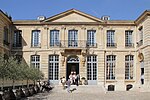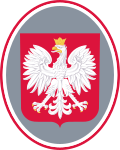Hôtel du Châtelet
Buildings and structures in the 7th arrondissement of ParisHouses completed in 1776Hôtels particuliers in Paris

The hôtel du Châtelet is a hôtel particulier, a kind of large townhouse of France, at 127, rue de Grenelle, in the 7th arrondissement, Paris. The building is now the home of the Ministry of Labour and the minister’s official residence.
Excerpt from the Wikipedia article Hôtel du Châtelet (License: CC BY-SA 3.0, Authors, Images).Hôtel du Châtelet
Rue de Grenelle, Paris Faubourg Saint-Germain (Paris)
Geographical coordinates (GPS) Address External links Nearby Places Show on map
Geographical coordinates (GPS)
| Latitude | Longitude |
|---|---|
| N 48.8575 ° | E 2.3158333333333 ° |
Address
Hôtel du Châtelet (Ministère du Travail, des Relations sociales, de la Famille, de la Solidarité et de la Ville)
Rue de Grenelle
75007 Paris, Faubourg Saint-Germain (Paris)
Ile-de-France, France
Open on Google Maps










